
Introduction
I have always been fascinated by bass in music. That’s probably why I always feel a little bit of a fraud when someone calls me an “audiophile”, as my tastes quite often encompass a little more lower end substance than the current fashion for a more lean and mean sound. I can appreciate detail and resolution with the best of them, but for me, it doesn’t mean anything without the ability to make me feel the song. As a result, I’ve always had an interest in picking up some 64 Audio gear and seeing if their famously warm and bassy “house sound” ticked my boxes – taking advantage of the recent end of summer sale, I purchased a set of the U8s after a brief exchange with their very helpful customer service team to try and bottom out which would suit me best out of the 4SE, 6 and 8.
Full disclosure – I wasn’t 100% sure what to expect, as I have tried a few of the current 64 Audio lineup (including the Fourte flagship) at the last two London Canjams. Being honest, I was always left a little underwhelmed by the tuning of everything except the Fourte, and even that didn’t blow me back in my seat with awe. This just goes to show that sometimes a first impression can’t give you all the information you need to really assess whether something will work for you sound-wise (especially in noisy show conditions). I have now spent close to two months with the U8, and my opinions of what the 64 Audio house sound and their unique in-house technology can deliver has been pretty much upended with the U8 growing on me more and more as time goes on. This is a signature that unfolds over time, taking a while for your ears to get accustomed enough to the sound to pick out the subtle nuances that are scattered around like confetti.
Please note – this review was written and originally posted on my blog just prior to the release of the new 64 Audio range. The U8 is still available in their B-Stock section the last time I checked, and should be readily available on the FS boards, so I am posting this review for any interested parties.
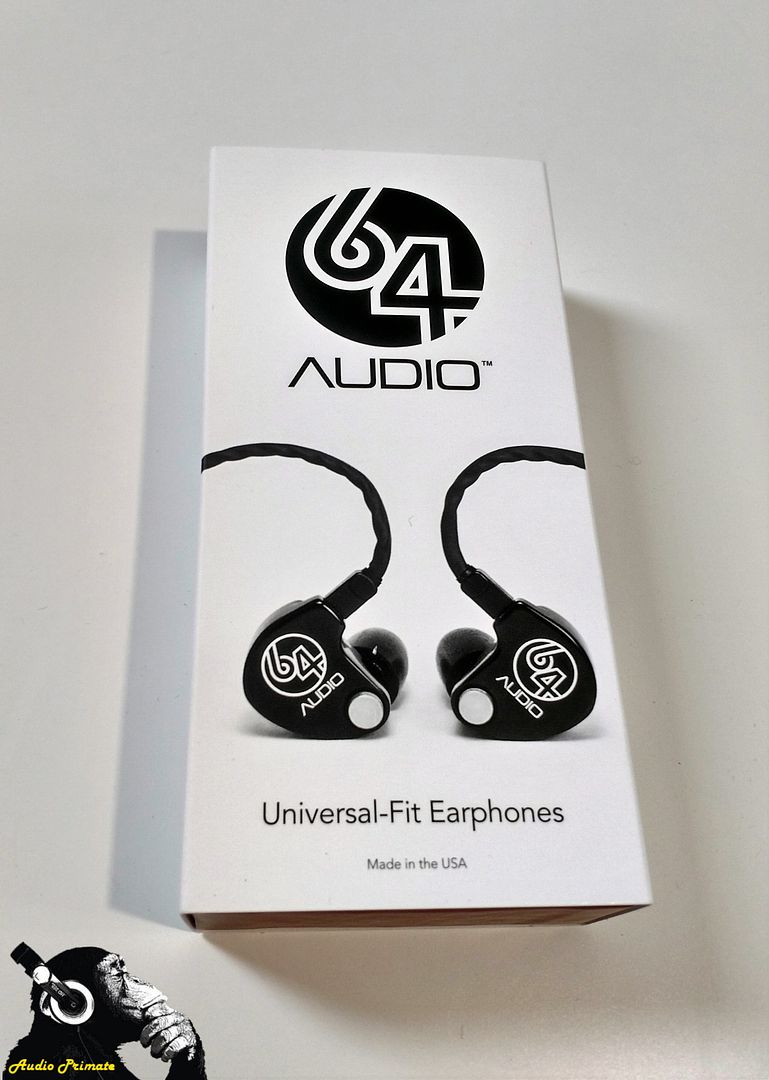
Unboxing
For a $1000 set of IEMs, the 64 Audio experience isn’t the most opulent, but there is an elegant simplicity and economy of form to the packaging. The box is adorned with the usual graphics and product picture on the front, and some explanatory text about the company and their proprietary APEX technology on the back. Inside, along with instructions about how to put them in your ears, you find a sealed bag of tips (6 pairs, split half and half between memory foam and silicon), an anti-moisture pellet, one 64 Audio sticker and their 3D printed custom carry case.
The case takes up most of the interior package space, and is probably the best designed example of an IEM case I have come across. Every square inch is crammed with functional space, each IEM shell having its own small compartment to be placed into, with a gap for the attached cables to exit into the main compartment. In the main compartment, a built in cable winder and four “fencepost” style jack holders sit in the middle, allowing you to wind even a thick custom cable like the Effect Audio series tightly and keep everything neat and unbent.
In the lid of the case are the usual wax cleaning tool and shirt clip, both having their own clipped storage space. Overall, it is well thought out, pretty robust and just looks good.
In fact, the only thing that lets down the 64 Audio unboxing experience is the choice of tips – at this price bracket, 6 sets is pretty slim, and the enclosed silicon and foams aren’t actually the best sounding with the U8 – I have found much better synergy with the usual after market options like SpinFit or the foams that came with my Campfire Audio gear. That being said, this is still a very well thought out loadout, the anti-moisture tab showing the “working musician” target audience for the brand. There are other subtle tweaks that mark this out as a monitor designed for stage and studio users, but those will become apparent later on in the review.
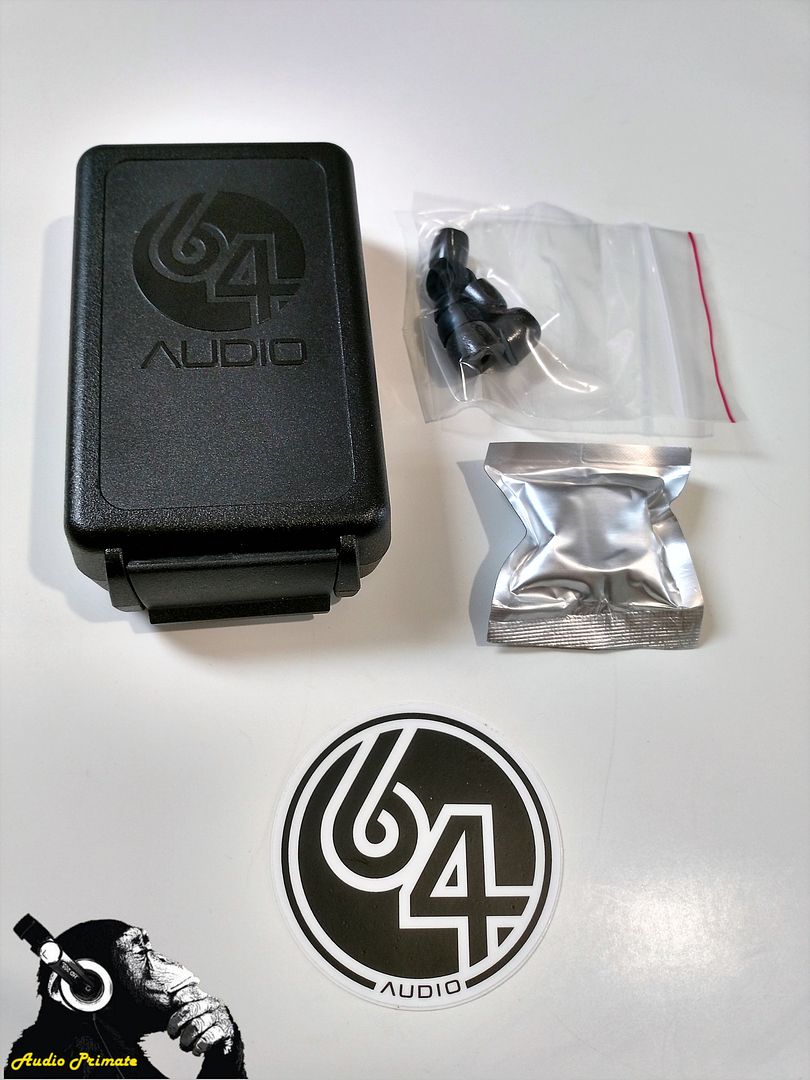
Design and ergonomics
As one of 64 Audio’s “U” range of universal IEMs, the U8 shares the same basic shell shape and colour scheme as the rest of the original U range, where the only significat difference between the twin-driver U2 and the former flagship U12 is the depth of the shells. The design of the IEM is vaguely reminiscent of a block of cheese or a Trivial Pursuit quiz piece, having a slight curve to some of the edges but otherwise remaining pretty angular. The geometry has been worked out pretty well, with the IEM nozzle protruding slightly downwards and set at an angle that provides an optimal insertion for my cavernous ears. Nothing too flashy, but once in, the earphones sit very comfortably in the shell of the outer ear with no awkward hotspots or discomfort, and are able to be worn for hours at a stretch with no issues. This is a very good example of functional design – it may look utilitarian rather than eye-catching, but it just works. Kudos to 64 Audio for finding one of the best generic IEM designs I have come across yet outside of the current crop of “pseudo-custom” designs currently hitting the market.
The company is named with reference to the year 1964 (their original moniker was 1964 Ears) where apparently a lot of significant events in the music world occurred. When looking at their design, the firm may as well have been called 1908 Ears, in deference to the legendary Model T Ford that obviously inspired their choice of colour scheme for all of their U models below the U18. Simply put, you can get a universal 64 Audio IEM in any colour you like, as long as it’s black. The only thing that offers a splash of colour on the shells are the metallic gray APEX modules and the 64 Audio logo on each shell, and even those are strictly in the monochrome palette range. If you are looking for a piece of ear jewellery you will need to look into their custom IEM range, but I personally like the refreshing simplicity of the black and white colour scheme.
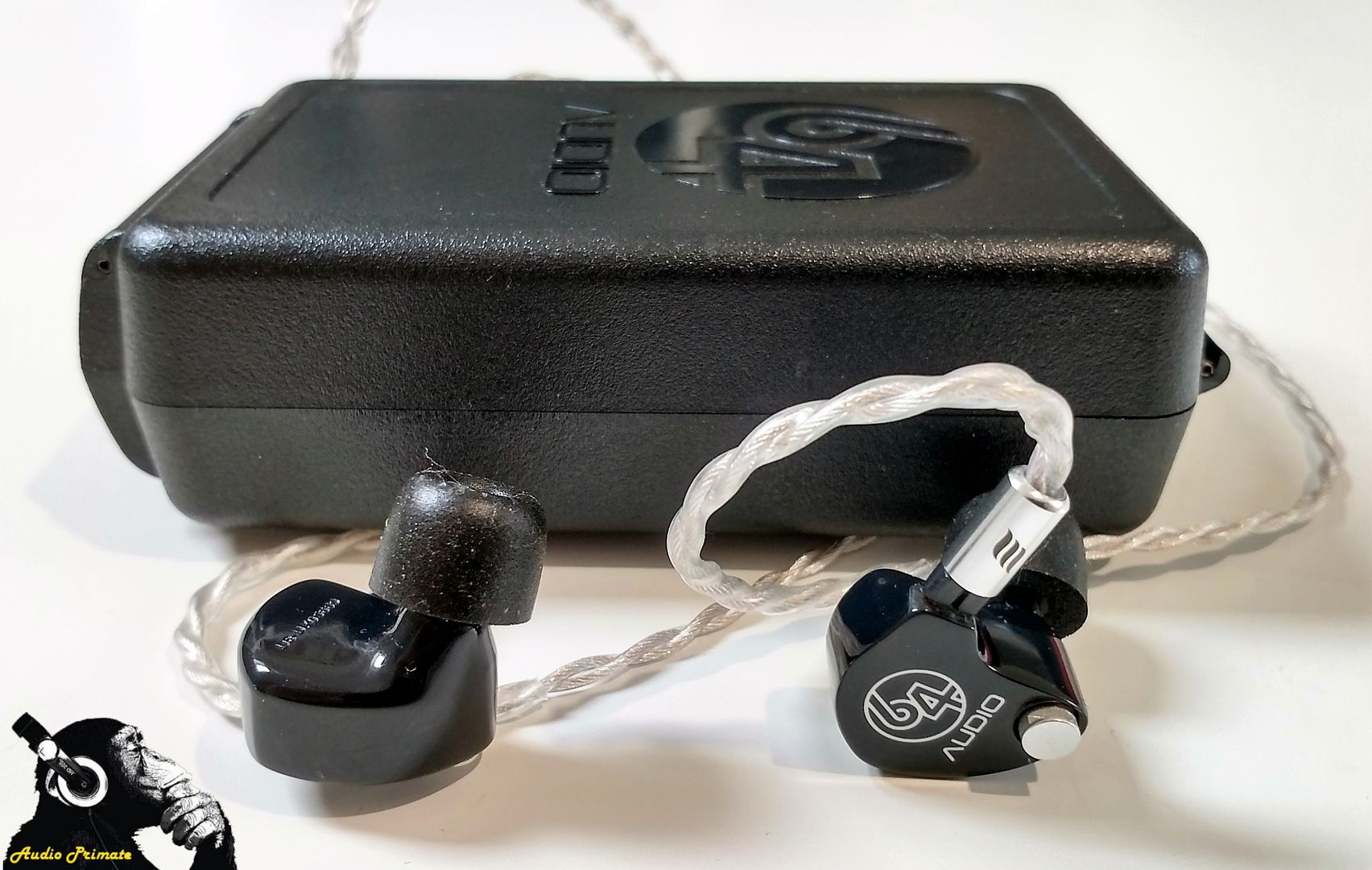
Audio quality
The U8s are touted as the basshead IEM of the original U-series from 64 Audio, and they don’t disappoint down low. With a whopping 50% of the 8 balanced armatures crammed into the shell casings devoted to either sub or mid bass, the U8 can pump out some seriously meaty bottom end. This is still balanced armature bass, however, so it lacks a little in terms of sheer physical impact, but makes up for it with a rich velvety texture, trading slam for substance. The depth of the bass is quite simply superb, producing a highly detailed and thickly layered sound – if there is lower end detail and texture in a track, the U8 will almost certainly find it. It gives a nice throb to more sub-bass driven genres, and keeps that fairly well balanced against the mid bass to avoid the stereotypical “hump” or “thumb” that a lot of monitors go for, preferring to keep a closer balance between the sub and mid bass ranges.
Despite the low-end emphasis, 64 Audio market this as an earphone that is uncompromised in the mids and treble, and in the main the marketing hype holds true. The mids are smooth and liquid, and not overshadowed by the prominent bass, standing reasonably forward in the mix. The 64 Audio “house sound” is known for its warm tuning and spacious soundstage, and the U8 doesn’t deviate in either of these aspects. Vocals are warm and smooth, sitting a little more forward than neutral, and providing a nice rich undertone to male vocals due to the heavy weight of the bass notes beneath. There is a body and fullness to lower register singing that can be like slipping into a warm bath sometimes, sounding like the aural equivalent of a hot toddy. Fans of a crystal clear or more “reference” midrange can probably turn away now, as while the U8 doesn’t feel particularly coloured in this area, the overall tuning is a little too warm and musical for fans of a true neutral sort of sound.
In terms of detail and resolution, the U8 is no slouch, but definitely not a micro-detail monster. Mid range instruments (guitars, piano etc) all sound clear and nicely defined, the large stage presentation of the U8 allowing each instrument ample room to breathe. Micro-details are present on tracks like “Coco” by Foy Vance, but are not the clearest or most emphasised, showing hints of what the drivers in the U8 are capable of. The emphasis here is far more on tone and substance, giving each note a fully rounded feel and thick presence. Separation is very good considering the warm tone of the monitor – this is due mainly to the size of the staging again, with the APEX module tech allowing the U8 to push music successfully outside of the head in all directions, giving a good 3D representation of better recorded tracks in my collection.
One common criticism I hear of the 64 Audio range is the rolled off treble evident in their models. Personally, I find the treble quite nicely done, with a sweet and clear sound to it and decent enough extension for something so warm. It certainly isn’t for those seeking a crystalline and crunchy top end, and despite the huge soundstage it doesn’t exactly scream “air”, but what is there is strong and smooth as silk. It certainly doesn’t feel overly lacking for me, and balances beautifully with the rest of the sound to give the U8 their uniquely warm and solid character.
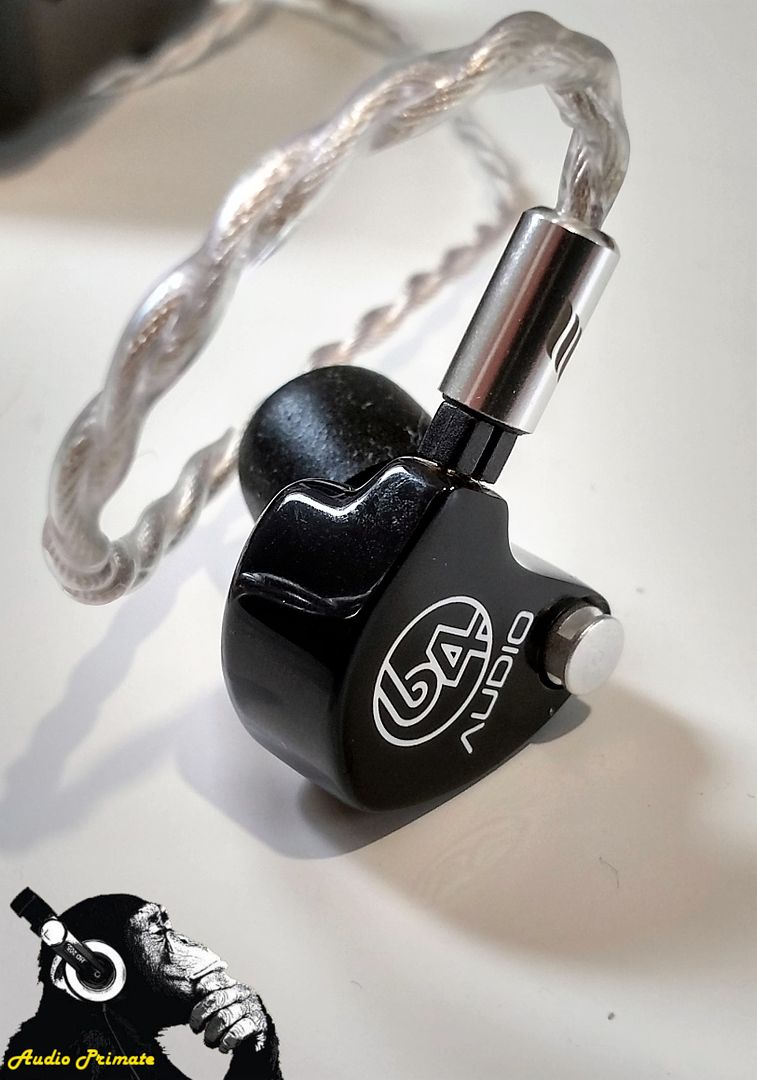
Bass
If you are reading a review on the premier basshead IEM from this manufacturer, this is probably the first section you skipped to when you clicked into this writeup. If that is the case, I’ll get straight to it: these IEMs can produce some serious basshead quality low end. They hit hard for an all-BA setup, extend very low with no great loss of power or emphasis as you scrape into single-digit Hz territory, and carry a deliciously meaty texture and complexity that is up there with the best I’ve heard for bass.
To be clear, they still suffer from the limitations of a typical balanced armature setup, trading quickness and texture off against a comparative lack of physical impact and “slam” when put up against dynamic driver powerhouses like the Campfire Audio Vega. To use a very random alcoholic analogy to explain, something like the Vega produces bass with the same sort of punch and thickness you get from a good shot of Sambuca, kicking the back of your throat on the way down with a short, sharp shock and slowly receding as the burn in your chest fades out. The U8 is like a good red wine, full of texture and velvety smoothness, slipping down the gullet with a nice sense of body but fading from the tastebuds a lot quicker, and without that physical shock factor. If you are after a rich sound with texture and nuance, the U8 has you covered in spades, just lacking that eardrum pounding movement of air and feeling of physical impact that is the hallmark of a good dynamic driver.
Getting into the sound, the first test track is “The Crow” from Black Country Communion, off their latest BCCIV album. This track kicks off with a rasping bass riff from the veteran rocker Glenn Hughes, followed shortly afterwards by some thudding drums from Jason (son of John) Bonham that kick the track into high gear. The bass guitar sounds thick and rounded, with plenty of substance and a nice feeling of bite. The drums are suitably meaty too, sounding full and bombastic as the old-school rock band rhythm section tears up the bottom end of the track. As befits a track recorded by people who were about in the golden era of 70s hard rock, there is a bass solo that kicks off mid-tune at the 2:53 mark, and the U8 handles this with aplomb. Each note sounds raspy and ferocious, but remains fully formed and distinct, the quad-driver setup keeping pace with the track without any smearing or muddling in the lower end.
Another good track for texture is one of my favourite reviewing tunes: “Bad Rain” by Slash. The opening bars of kick drum hit with force and a nicely rounded feel to the drum sound, and when the snarling bassline comes out to play, the whole track takes on a thickly layered feel that is just superb. The bass guitar strings sound three dimensional and real, and the edges of the note are rounded out by a little sub-bass thickness and vibration that give some serious solidity to the whole track. The sound of the stings resonating as each note is plucked is easily audible in the layers of sound, adding a supremely textured feel to the whole bassline. I don’t usually wax lyrical about the presentation of this track, but the U8 has absolutely nailed it for my preferences here, striking the right balance between richness, texture and just sheer quantity that really makes the sound on this tune very addictive.
“Hello, It’s Me” by Sister Hazel is up next, and is one of my usual testers for liquidity and overall bass tone. The bass line slinks in, sounding full and thick as it slowly oozes into the track. Like with the Slash track above, there is a rasp at the edge of the bass notes as they are plucked, but the overriding impression is of a rich and thickly liquid sound, filling up the lower end of the track and coating everything like liquid chocolate. This isn’t the most liquid presentation of midbass I’ve heard, but there is a definite fluidity to the sound, moving effortlessly around the track with just the right blend of substance and flexibility.
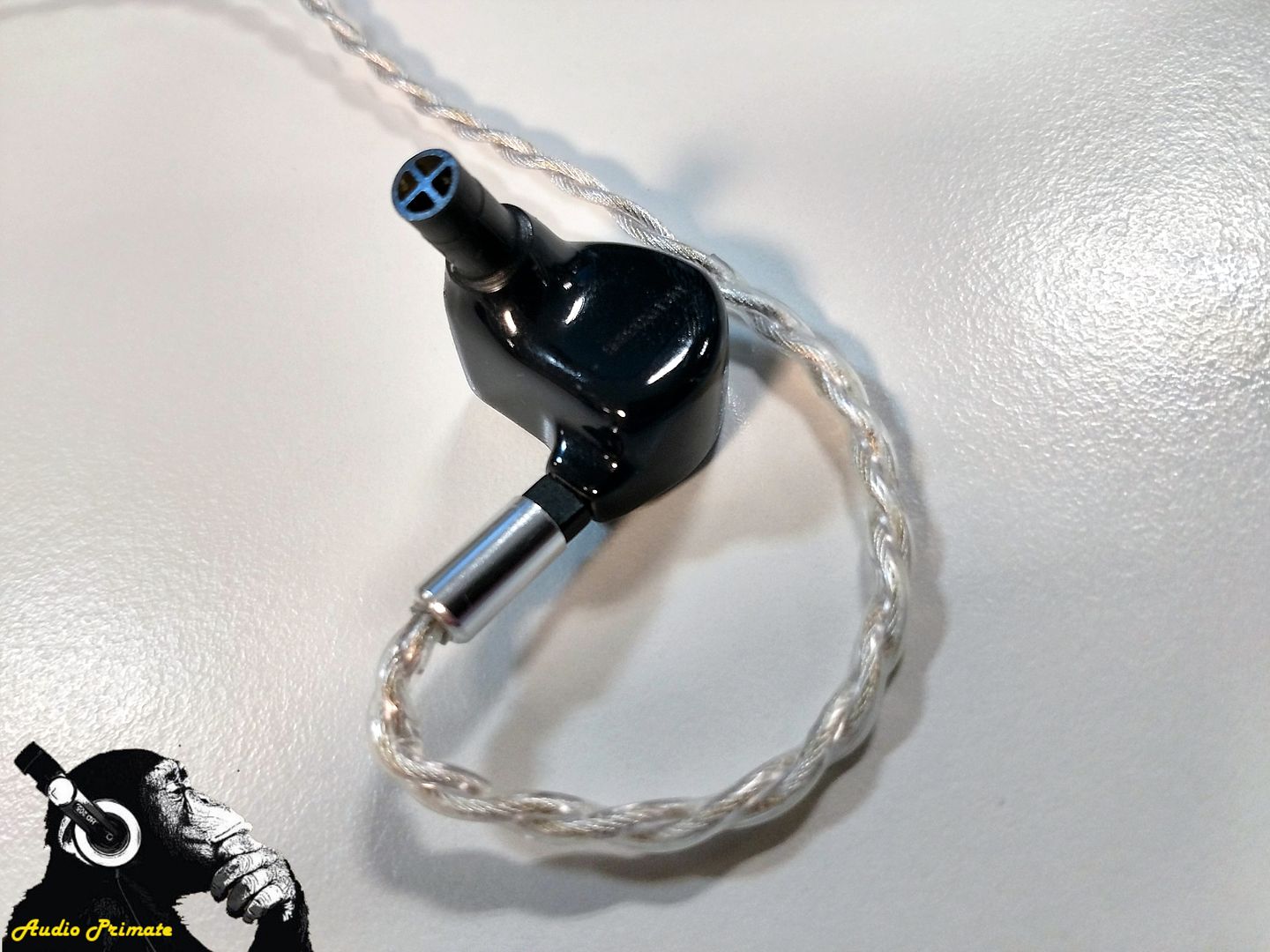
Switching across to a little more sub-bass driven music, “Heaven” by Emile Sande kicks off with a powerful sub-bass thrumming, the opening bars laying down a heavy sub-bass hum in the inner ear, and triggering a nice little tickle in the eardrum as the subsonic vibrations are felt as well as heard. This is one of the strengths of the U8, with a very capable sub-bass presence for an all-BA setup. Even though the quantity is definitely on the high side, it doesn’t drown the upper bass or lower midrange, just adding extra layering and a little warmth and hum right down low. The drivers in the U8 seem to share the same sort of magic that the old Aurisonics ASG series used to excel at (minus the insane levels of bass impact the 2.5s could produce), only bringing bass out of a track if it is there in the mix, rather than drowning everything you listen to with an omnipresent bass emphasis.
Impact is also decent on this track for a BA setup, the double kick drum and snare that set the rhythm for the tune hitting with a good sense of snap. BA bass is an unusual beast, if you are coming from a dynamic driver setup – the initial punch hits quick and snappy, but the accompanying sense of impact never arrives. The U8 is better than most BA setups I’ve heard in this respect due to the serious sub-bass capability on show, which adds a little of that viscerality to proceedings when it kicks in.
Sticking with more electronic fare, it would be remiss not to throw a bit of Daft Punk into the mix. “Get Lucky” is given the red carpet treatment by the 64 Audio model, the infectious bassline hitting low and heavy throughout the song, dancing nimbly around the jangling guitar and showing no signs of roll off as the notes keep dropping lower and lower. The bass emphasis here is perfect for the track, not overpowering the rest of the frequency ranges, but giving a bass-driven emphasis to the sound that becomes quite infectious. A good sign that an IEM is doing something right is when you find yourself stopping taking notes during a review session and just sitting there tapping your foot or nodding your head to the music, and the U8 manages that on a few occasions with this track.
Surprisingly, another area the U8’s bass capability is highlighted is with classical and classical fusion styles of music. The mixture of sweeping synth work and orchestral cello and violin on “Adagio For Tron” and “Arena” by Daft Punk are both handled extremely well, the cellos in particular sounding rich and vibrant, lending the track a sense of scale and power. “Palladio” by Escala is similarly well dealt with, the subtle detailing on the bowing of the cello playing well against the more driving violin and the deep textures of the rest of the instrumentation to again give a sense of weight and scale to proceedings that really suits this style of music.
Overall, and as you would expect, the bass on show here is a great example of what can be achieved with a balanced armature setup. The 4xBA setup produces a bass that is thick, textured but never overpowering, with a beautifully layered presentation that will dig any hidden detail out of your favourite tracks with ease. One note bass this is not – this is up there with the best overall implementation of bass I have heard on an in-ear monitor, in the same bracket for me as the Aurisonics ASG-2.5 and Campfire Audio Vega. Being picky, a little dash more slam would have been the cherry on the cake, but if that came with a loss of the richly layered and nuanced sound that 64 Audio have made possible in the bass region, then I would probably hesitate about making the change. Overall, this is quality bass for bassheads and non-bassheads alike, giving an almost speaker-like warmth and low end substance to the sound that can become very addictive. This is bass that is built to be enjoyed as well as analysed, and enjoy it I certainly have.

Mids
Despite the pretty heavy bass tilt to this IEM, the midrange is presented very well, with very minimal bleed from the bass, and a clean and warm sound. Vocals feel slightly forward, sitting just behind the bass in terms of stage position, but still providing a “front row” feel to proceedings rather than a more remote feel to the stage. Due to the bass tuning, the midrange is definitely a warm and smooth affair, the voluminous bass below warming the air on the stage considerably. This is balanced out nicely by the soundstage enhancing properties of the APEX technology they use, so the midrange never feels congested or stuffy, and retains its clarity and separation better than you would expect given the overall nature of the sound.
Starting with the vocals, “Black Muddy River” by Gregg Allman paints a haunting melody, Allman’s vocals sounding clear and soulful and sailing effortlessly above the multiple layers of guitar, organ and bass that make up the track. Male vocals in general are well handled by the U8, the hefty bass presence adding a little extra body and warmth at the extremity of the notes for most vocalists, and lending a certain sweetness to the presentation. This track has a beautifully belnded gospel style chorus, and the U8 maintains a nice sense of separation between the competing vocalists, pulling them just far enough apart to be able to track individual voices but not so far apart they lose their sense of cohesion.
Sticking with Gregg Allman, a track from his “Southern Blood” album that is a current favourite is the closing track, “Song For Adam”. This is the last song Allman recorded before he passed away, and the slightly cracked and emotional vocal delivery is one of the more affecting tracks I have heard recently. The U8 conveys that emotion beautifully, keeping Allman’s voice honeyed and smooth throughout, but capturing the raw emotion that is evident throughout. The song is about the untimely death of a friend, and towards the end, Allman actually stops singing for a few lines, obviously overcome by the emotion in the tune (it has later been written that he sang this in memory of his brother’s untimely passing). The U8 express this sense of pain very well, sucking you in to the music and allowing Allman’s pain to bleed out into the very substance of the track. It is always difficult to pin down exactly what makes an IEM “emotional” in terms of vocal delivery, but whatever it is, the U8 does very well here.
Another great purveyor of emotion in music was the King himself, so it comes as no surprise that his recent albums with the Royal Philharmonic also sound good through this setup. The gentle vibrato and hushed chorus of “And The Grass Won’t Pay No Mind” sound engaging and mellow at the same time, the croon of Elvis’ famous voice coming across beautifully, and carrying just enough rasp in the chorus to stop the otherwise smooth and syrupy vocals overpowering the track. “You’ve Lost That Loving Feeling” sounds similarly sublime, the lower key Elvis sings this track in playing to the strengths of the U8 and sounding throaty and full, with the chorus lifting into a euphonic blend of voice and instrumentation as the choir joins in.
Guitar based music is handled pretty well by this particular driver configuration too, carrying plenty of substance. The general smoothness of the overall presentation does mean that the U8 isn’t the last word in crunch and bite where it comes to more uptempo guitar rock, but the rich warmth of the signature does lend a sense of weight to heavier passages of music that actually plays very well with harder rock music. “Shadow Life” by Slash and Myles Kennedy is driven by a frenetic riff, the U8 adding plenty of weight and impact to the sound as it chugs away in your ears. Despite the lack of “edge”, the dual BA drivers in the U8 are more than capable of keeping up with quicker paced music, intricate guitar passages never feeling smeared or blurry as they land in quick succession.
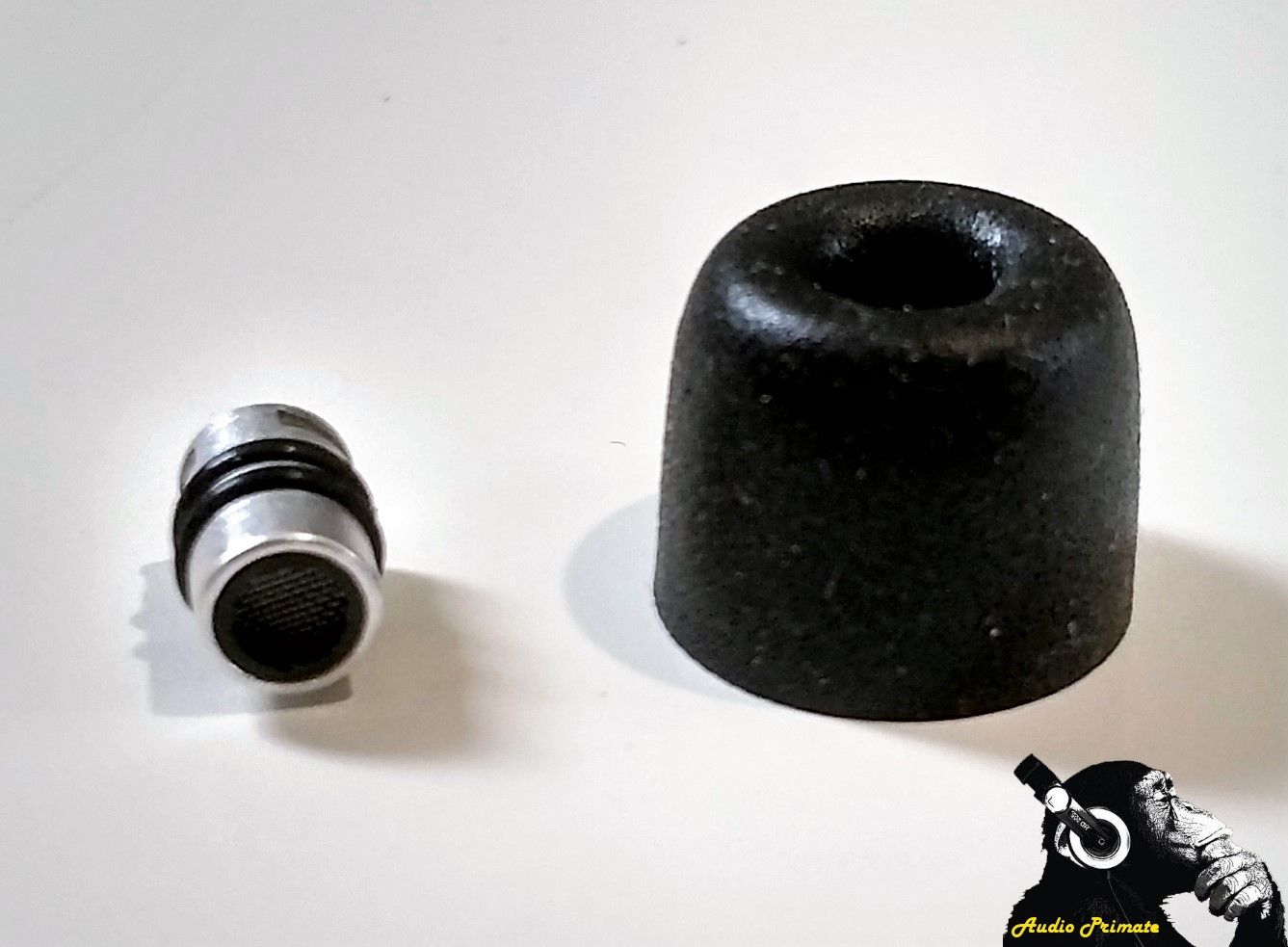
The warmth and weight adds an almost grungy tone to more distorted guitar work, “Growing On You” by The Darkness sounding magnificently sleazy as it winds up, evoking the 80s hair metal essence of bands like Motley Crue. This track also highlights the very good levels of separation the U8 is capable of – the twin guitar intro is ever so slightly offset, finishing a split second later in the right ear than the left ear. The U8 makes this distinction clear, allowing both lines to present clearly in the ears of the listener without sounding divorced from the main body of the sound. “Welcome To The Jungle” by G n’ R also retains excellent separation, with the duelling guitar lines of Izzy and Slash playing without overlap into each ear and highlighting the actual complexity of the track as it goes on. Again, the weight of the midrange helps add a chunky sense of body to the track, bringing out the sleaze in the classic sleaze rock riffing very well.
In terms of detailing, the U8 is a good if not stellar performer in this price bracket (or indeed, the bracket below). The drivers have good clarity, so individual lines of instrumentation are presented nice and clearly, but when it comes to drilling down into the finer details hidden beneath the surface, the U8 certainly wouldn’t be described as a detail monster. The emphasis here is on a smooth and clean presentation, just lacking that final layer of resolution that is apparent in the bass in direct comparison.
Firing up “Coco” by Foy Vance, the micro-detailing in the subtle guitar strums of the intro is audible but not massively apparent, presenting a little further back into the body of the sound rather than on the surface. Similarly for “Palladio” by Escala, the subtle sounds of moving chairs and creaking bows in the opening minute that become more apparent with something like the EE Zeus are buried a lot deeper down in the mix here, which is perhaps unsurprising as the U8 is less than half the price of the EE flagship.
To be clear, the U8 isn’t a sloppy or veiled sounding monitor in the midrange, possessing a very engaging and surprising clear sound to the tuning, and carrying a nicely positioned vocal placement. Other mid range instrumentation like piano and strings sound smooth and rounded, piano and keyboard carrying a slightly stylised but very engaging sound. The 2Cellos/Lang Lang collaboration “Clocks” sounds very good through these IEMs, the piano work of Lang Lang feeling delicate and providing a nice element of light to the more weighty cello work.
Tracks like “Saturate” by The Chemical Brothers sound crisp and full of energy, the heavy synth lines and electronic breaks sounding full bodied as the song winds its way around your eardrums. Synth carries a good sense of weight, having the trailing edges of the notes thickened up like guitar based fare with the underlying echoes of the bass in the sound. The large soundstage works well with this sort of electronica in terms of instrument portrayal, allowing the various electronic sounds to float around the stage, flitting back and forth and twisting on themselves as the mixing engineer intended, without feeling hemmed in or overly artificial.
Lastly, my usual testers for sibilance and mid-range harshness didn’t manage to elicit any obvious discomfort – “Whiskey And You” by Chris Stapleton was raspy in the usual places, but the normally prickly chorus is presented with just enough warmth and honey to smooth over the harsher edges of Stapleton’s voice (I am of the opinion that the audio engineer mastered some of the vocals on this track with a stick blender and a paper shredder). “My Kind Of Love” by Emile Sande fares slightly less well, Sande’s peaky vocals in this track still managing to cut through the high midrange like a knife, but just stopping short of drawing blood in the eardrum. Again, this is another track that has been mastered hot in the vocal range, but the U8 manages to retain enough definition to keep it clear while still smoothing out the worst of the sound.
Overall, considering the sheer quantity of bass that sits beneath this midrange, the team at 64 Audio have done a very good job with the tuning here, keeping the clarity and definition pretty much untouched by the heavyweight foundation it is sitting on. These aren’t the most detailed mids you will ever hear, but they are resolving, weighty and very musical, with a nice shade of warmth throughout, and enough presence to stop the monitor sounding V-shaped. Very nicely done.
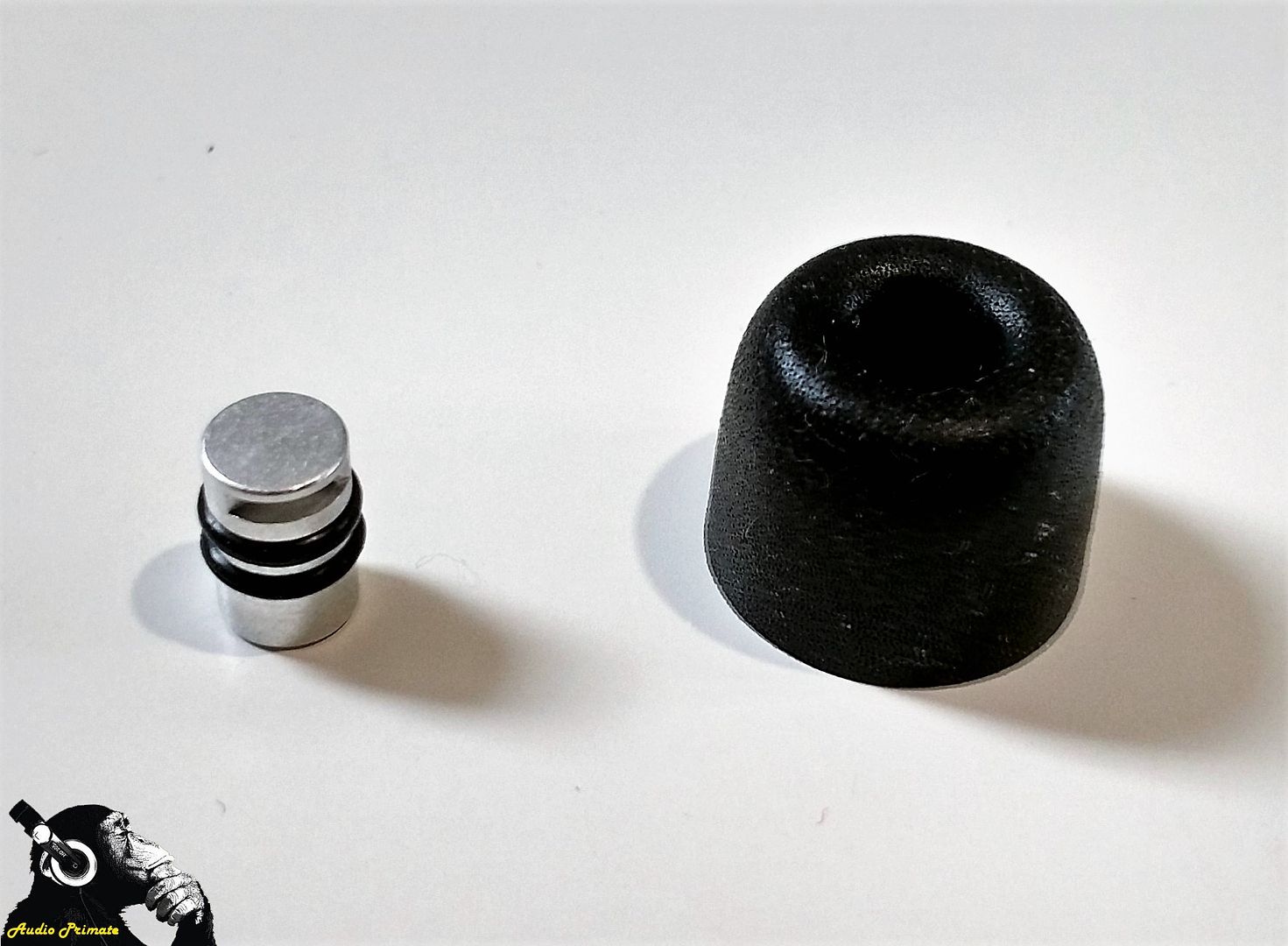
Treble
Considering the bass-driven tuning of these IEMs, the general perception is that the U8 doesn’t really do treble. I was pleasantly surprised to find out that isn’t quite true. The high end on the 8-driver model is certainly far from emphasised, exhibiting a slight rolloff in the super high frequency ranges but keeping the same sense of clarity and cohesion as the midrange. This is a treble that isn’t sharp oe emphasised, but is still clearly audible against the backdrop of the mids and bass below it. The U8 has a downward sloping tuning overall, but for me, the treble on offer doesn’t feel overly lacking here, keeping just enough edge to cut through the warmth of the tones underneath and lodge in the mind of the listener without any overly obvious sense of veil.
The actual sound errs towards warm and sweet in the higher ranges, and definitely leans more towards my own personal treble preferences. This isn’t a treble with bags of sparkle or super-crispy detail, but it sings clearly when needed. Actually, the presentation does sound a little unusual, the lack of sparkle in the top end being balanced out by the excellent sense of space and scale of the music that the APEX tech imparts. This means that the treble can be clear and smoothed without sounding overly closed in, or robbing the “air” from the top of the soundstage.
Playing “Starlight” by Slash, the opening guitar licks feel well defined and weighty, carrying enough of the raw-edged dissonance to keep the energy in the track at the right level. Kennedy’s vocals on this track skirt the line between alto and Mickey Mouse in terms of range, and the high wails again sound strong and clear. The edges of the notes feel smooth and polished, giving a very forgiving and almost syrupy sweet tinge to the higher end presentation. Sibilance and harshness will be very difficult to find on this IEM without some seriously bad recordings and a lot of effort, with the U8 presenting some of the most agreeably smooth sound that you can find. Even songs like “Whiskey And You” by the gravel-throated Chris Stapleton are given the honey and molasses treatment when it comes to their sharper passages, so this is definitely not a monitor that is likely to cause fatigue of any sort when listening. As mentioned, this smooth sweetness doesn’t come at the expense of an overly dull or muted sense of stage and air, with the APEX tech still allowing the solid treble notes to give the feeling of plenty of space around them. Overall “height” of the sound in the treble doesn’t feel massively tall, with the presentation being more wide and deep than it is vertical.
The sweetness of the presentation does have one or two minor drawbacks, however. Cymbals and metallic percussion sound a little muted and lacking in emphasis, drifting further back into the soundscape rather than pushing over the top of the sound. More synthetic music can also lack a slight dash of sparkle, with usually glittering keyboard runs in both “Nobody To Love” (Sigma” and “Go” (The Chemical Brothers) sounding a little two-dimensional as they burst across the tracks, in contrast to the weighty and gloriously full bodied bass on the two tunes. Complex hi-hat work on albums like “III” by Chickenfoot and some of my more uptempo rock tunes can feel a little lost in the overall sound as well, with decent speed and clarity but just not quite the same “zing” as a sharper treble reproduction will give.
Overall, this is a treble that is functional and certainly very capable, but its not a milkshake that will bring all the boys to the yard if screaming clarity and edges so sharp you can cut diamond is what you are yearning for. This is best suited for guitar based genres of music like rock and blues, and some classical styles. It will perform well enough with other styles, and has never felt unenjoyable or muted for me no matter what I throw at it, but this particular tuning is designed to complement the mids and treble rather than compete with them, so bear that in mind when looking at what you need from an IEM. Personally, I absolutely love this sort of clear, clean treble presentation, so the U8 have very much landed in the middle of my ideal preference for higher end sound, but I am aware I am a fan of a smoother treble than most card carrying audiophiles, so please near that in mind.
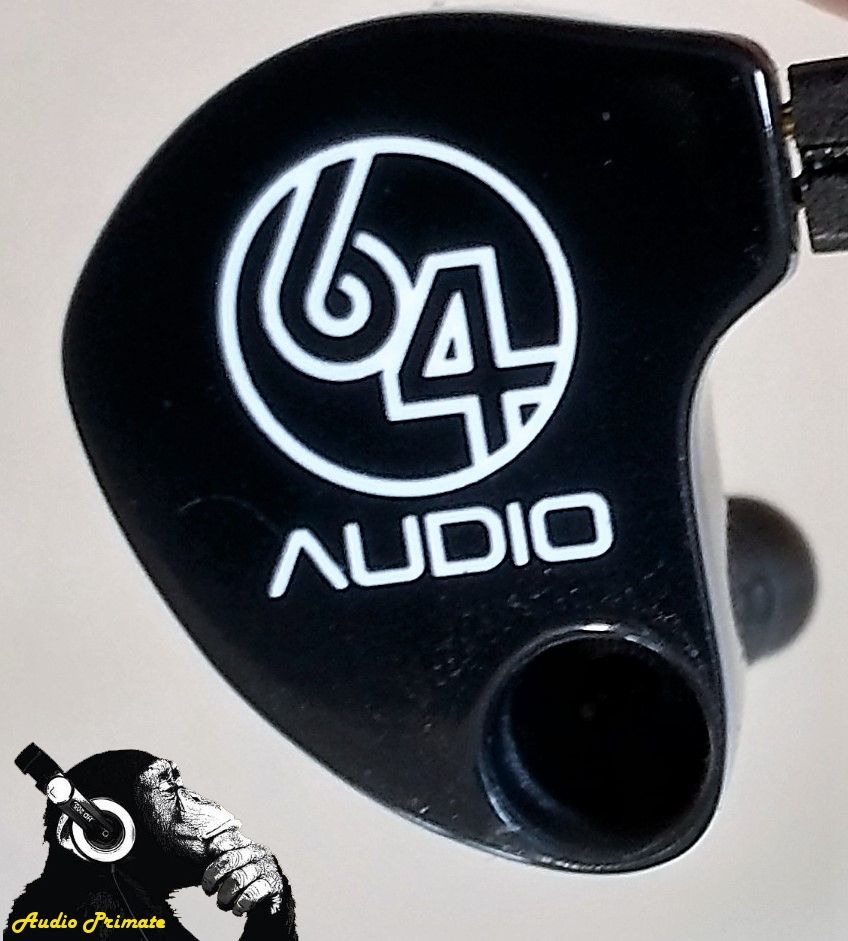
Soundstage, layering and separation
As already outlined, the U8 has a larger than expected soundstage, ably assisted by their in-house pressure relieving technology. When I say larger than expected, I mean larger than expected from an IEM in general, rather than the U8 specifically. The lateral width and depth of the sound is pretty impressive for an in-ear solution, and comfortably ranks up with the most expansive monitors I have heard in any price bracket, despite the overall warmth of the tuning. Staging is somewhere approaching spherical, just feeling slightly wider than it is deep to my ears with the M20 module. I have not heard the M15, but have been reliably informed it adds even more space to the staging at the expense of a little isolation, so could be something to bear in mind of you are a soundstage aficionado.
Separation of individual instruments is helped by this stage sizing, with a good DAP or source able to pull each strand of music sufficiently far apart that it gives the impression of space between the musicians, like you were listening to them play in a small room in front of you. Each instrument has plenty of dark space around it sonically, and this is definitely a strength of the U8 for me. The warmth and power of the lower frequency bands helps to present the notes as quite large in “size” to my ears, so despite the large area they have to work in, you still don’t feel too remote or disconnected from the music being played.
Layering is also something work mentioning, as the U8 is pretty exemplary in some areas here. Specifically, the bass aspect – the quad-BA setup allows the U8 to present bass in a uniquely textured manner, with more layers in a well recorded track than you would find in a Frenchman’s prize onion collection. The detail in each layer as it stacks on top of the next is immense, and easily bests anything else in my collection apart from the Vega when it comes to total complexity of the sound in the sub and mid bass bands. I have emphasised the bass capability here, as when you rise up through the mids and treble, this layering becomes less evident, with the dual-BA setup in both regions not being able to push out the finely stacked details of the lower end. To be clear, both mids and highs are certainly not flat in their presentation, with plenty of prowess here as well, but it just isn’t at the same stellar level as the low end. I’ve never heard spent any serious time with the U12 (or upcoming U12Tia model), but if 64 Audio can pull off the same trick in the higher ranges with the additional driver count that they have achieved in the bass then I understand why some people are so gushing about their former flagship.
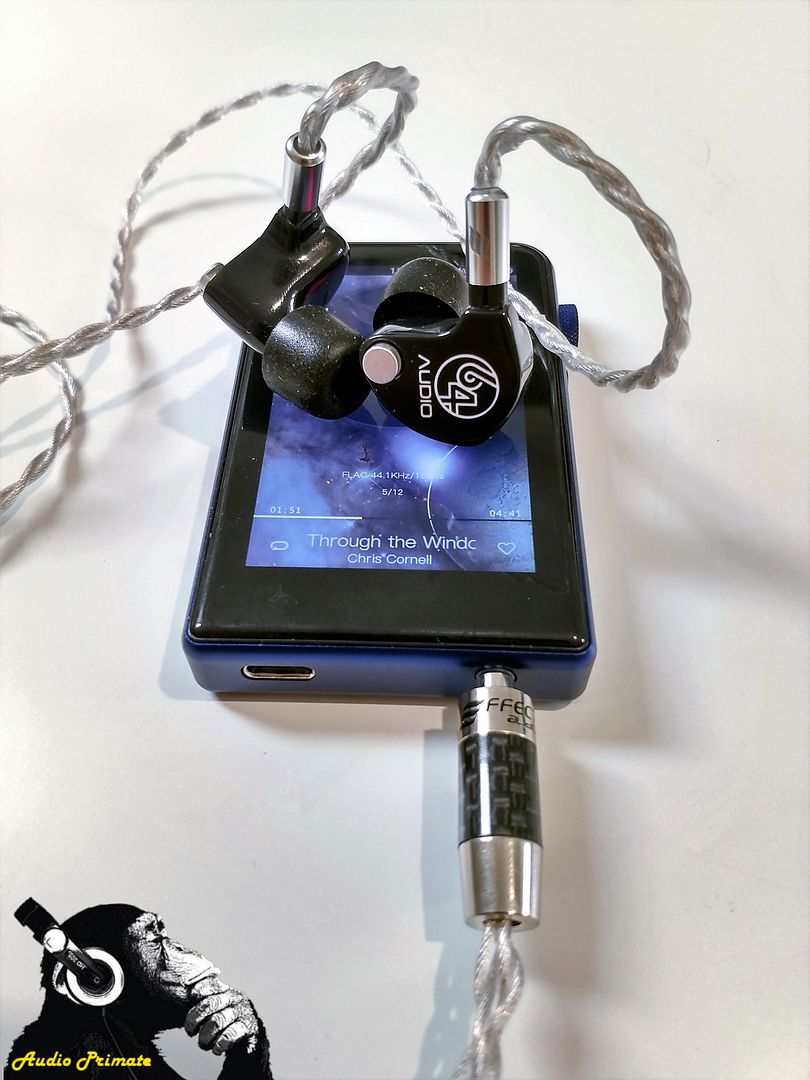
Source matching and synergy
64 Audio started life making IEMs under the 1964Ears brand, aiming their products at the stage musician market. As a result, it has been noted by more than one reviewer that their early gear was tuned with stage equipment in mind. This means much higher output impedance on a portable headphone rig (5+ Ohms, normally considerably more) than you get with a typical “audiophile” DAP.
Why is this important, you may ask? It’s important because it affects the impedance curve of the drivers, which in turn affects how they sound. Playing the U8s through a source with a higher OI like the Shanling M2S, you get a bassy but balanced sound, with good resolution and clarity. Switching to the highly resolving Opus #3 from TheBit (with an OI figure under 1 Ohm) and the U8 takes on a darker character, the mid bass gaining a little more quantity and the detailing and perception of clarity taking a slight hit in the mid range and upper end due to the additional warmth, even with the additional resolution of the #3 to balance it out.
While the U8 is very enjoyable with a little more bass (it really does become a true basshead unit), I am leaning more towards something something with a higher impedance (like the M2S or some popular fruit-based mobile phones) if I had to choose just one player to use with the IEM, as it gives a more enjoyably balanced but still warm and smooth sound. Another surprisingly good match is the Sony NW-A36 (or any of their A30 series), with the budget DAP from Sony’s current range providing a little extra width and cleanliness to the sound, playing to the soundstaging strengths of the U8 and pulling a little more out in terms of separation than the warmer and slightly less expansive sound from the M2S, while allowing me to indulge in my inner-basshead at the same time.
A quick note on cable synergy – while I am not a fervent “this wire is on fire!” type of cable advocate, I have found that I get the most preferable sound from my U8 out of my single-ended Effect Audio Leonidas cable as compared to the stock offering. It seems to accentuate the strong points of the IEM and also allow the midrange and highs to breathe a little more in the overall presentation in terms of space and detail retrieval. Please note that I haven’t done any super-scientific A/B comparisons on the cables (I dislike cable swapping at the best of times, so once something is in place after my initial experiments to find a favourite it usually stays there), so my perceptions may be equal parts actual effect, placebo/expectation bias and volume matching, so take this with the veritable kilo of salt if you aren’t a cable believer. The Leonidas also has far better ergonomics and feel than the 64 Audio stock cable, which isn’t poor by any means, but just not quite up to the standard of the $500+ monster from EA.

Apex technology
A few years ago, 64 Audio became the first mainstream IEM manufacturer to partner with Asius Technologies, producing the first set of in-ears with ADEL pressure relieving technology. More recently, the design team at 64 decided to take the same basic principle (reduce the pneumatic pressure generated by the IEMs in the ear canal) and launched their own version, called APEX (Air Pressure EXchange). This takes the form of a small cylindrical plug, inserted into a hole in the IEM shell that sits opposite the sound nozzle on the outer face. There are currently two different modules (the M15 and M20) available from 64, the numbers relating to the amount of sound (in dB) the filter blocks out. The modules also have an effect on the relative bass presence and soundstage properties as they effectively reduce the seal and isolation depending on which module you use, allowing the end user to tweak the sound signature accordingly depending on which filter is in place.
Not being familiar with the effects of the ADEL system apart from a brief exposure to some Empire Ears models at Canjam London I can’t speak to the differences between the two, but as for relieving pressure, the APEX seems to live up to its billing, and allows the U8 to be worn for multiple hours with no listening fatigue or unpleasantness. The APEX technology is also partly responsible for the vast soundstage the U8 is capable of producing, the additional venting creating a more spacious sound in the listener’s ear, almost like an open-backed headphone but with far less loss of isolation from external noise. I haven’t had a chance yet to hear the M15 module (the U8 ships with the M20 as standard), but I am very much looking forward to hearing how the other module is able to tweak the sound signature at some point in the future (and any other modules 64 may have up their collective sleeves going forwards).

Comparisons
Empire Ears Athena VIII (CIEM version)
The Athena is one of the “middle children” of the current EE lineup (as at November 2017), and comes in a little more expensive than the U8 at $1299, compared to the $999 offering price of the 64 Audio model. They both share an 8xBA driver count, with the Athena spreading the load a little more evenly across the spectrum with 2 drivers for the lows, and three each for the mid and high ranges, and utilising a slightly more complex 5-way crossover in comparison to the more usual 3 way system employed on the 8 series model.
In terms of packaging and accessories, the honours are fairly evenly split, with the EE loadout providing a larger but more robust pelican style carry case with a personalised nameplate, and some nice velvet-looking carry bags and for both the case and the IEMs and a cleaning cloth. The 64 Audio loadout is more pocket or bag friendly, but just lacks a little bit of pizzazz in direct comparison to the more high end feel of the EE offering. Fit and comfort isn’t a fair comparison here, as I opted for the CIEM version of the Athena, utilising one of EEs spectacular looking Abalone faceplates to really make the IEM stand out visually, in stark contrast to my “none more black” set of U8s.
Sound wise, the Athena has a slightly higher than neutral bass presence (it’s the most bass-heavy of the current EE Olympus range), but the dual-woofer setup doesn’t compete with the U8 here. The bass feels very present, but slightly “flat” in direct comparison to the ultra-textured U8, with less sub bass presence and a slight mid bass hump as compared to the more evenly distributed U8. Listening to something like “Palladio” by Escala on the 64 Audio model, the brooding cello sweeps that build up as the song gets going feel thicker and more textured, with a heavier sub-bass rumble and rounding to the sound. This is hardly surprising given the stated emphasis of the U8, so while the Athena is certainly not anaemic or bass-light in sound, the U8 is definitely the winner here if you are looking for a monitor with a more emphasised and bass-capable low end.
If bass is the normal playground of the 64 Audio line, the midrange is traditionally the area of strength for Empire Ears, and that is how it plays out here. The Athena presents the mids in a more forward manner, with less warmth but a greater sense of detail and clarity. Where the U8 has a nicely laidback and smooth feel to the sound, the Athena still retains that smoothness, but pushes the sound in front of the bass and has an almost effortless sense of clarity that helps cut through to the detail in a track without artificially sharpening the edges of the sound around it. For guitar and vocal based music, the Athena is the more aggressive and energetic of the two sounds, with a little less warmth in the midrange and a little more edge to the individual notes. Vocals are pushed further forward on the stage, with a greater feeling of clarity in comparison to the more velvety and rounder presentation of the U8. The U8 doesn’t feel veiled in the mids, but once you have adjusted to the Athena’s more forward styling, there is a touch more micro-detailing and clarity apparent around the fringes of the sound in direct comparison to the 64 Audio model. The U8 counters with a sweeter sound to the mids and a touch more weight around the upper bass/lower midrange transition, so this is more a battle of styles than a clear win or loss for either IEM. Listening to “Black Muddy River” from Gregg Allman’s last album, the Athena just has the edge in terms of the vocal delivery and delicacy of the gossamer-like acoustic guitar that is so gently layered in the back of the mix. In comparison, the U8 presents the track in a warmer and more euphonic style, with Allman’s voice a little further back against the instrumentation and the guitars almost fading into nothingness in the edge of the sound.
Treble is similar on both, neither monitor having a particularly emphasised or sparkly top end. The Athena is the crisper of the two in this regard, with a dash more emphasis in the highs and a more even balance between mids and treble in comparison to the slightly attenuated (in volume, not extension) top end of the U8. Clarity and detailing is again edged by the Athena here, just adding in a little extra dash of perceived resolution over the smoother 64 model. Neither model is tuned with any harshness in the upper frequencies, making both a very smooth and crystal clear ride with most of my music collection.
Soundstage is won by the U8, with a larger presentation and more space between the instruments. In fairness, EE do offer the option of an ADEL port (the predecessor to their own APEX tech that was used by 64 Audio up until recently), so this may even the odds somewhat, but I haven’t had the pleasure of spending any time with an ADEL-equipped Empire model as yet, so I can’t confirm that for certain. Layering is a mixed bag, with the U8 comfortably holding the whip hand in the lower end, but passing the torch to the Athena as the frequency ranges climb. Separation feels better to me on the U8, with the additional soundstage size coming in to play here – it is marginal though, with both IEMs being very capable in this regard.
In terms of gear synergy and driving power, the U8 is harder to drive than the Athena by a considerable margin (about 15 volume steps out of 120 on my Sony A36), although neither are in the hard to drive bracket. The U8 is also more susceptible to changes in source output impedance, becoming leaner and cleaner as the OI goes up, whereas the Athena is more stable. Finally, the U8 definitely wins the battle of the background noise if that is something that bothers you, with the Athena inheriting its ability to hiss with most all but the most silent of sources directly from its big brother the Zeus. To be fair, neither IEM produces a level of noise that I feel is noticeable when the music is on, so this is just for the sticklers out there.
Overall, both models are excellent examples of what can be achieved in the $1k IEM bracket, providing tunings that are musical and engaging, without crossing the line into overly analytical or losing sight of the music in pursuit of technical perfection. The fact that both monitors also possess excellent technical aspects is an added bonus. As far as calling an outright winner, I can’t make my mind up – the U8 offers a velvety richness to the sound and sweetness to the tone that is very addictive, and sounds good with almost all genres of music, the additional push down into the sub bass frequencies really rounding out the sound into an almost speaker-like experience. The Athena has a more accomplished midrange and treble, yet still carries enough bass presence and warmth to sound engaging and musical. Overall, if I could only choose one I would probably err towards the Athena for its slightly better technical prowess without sounding analytical, but for day to day listening and just sheer enjoyment of music I can’t fault either IEM.

Campfire Audio Vega
The Vega is the current dynamic driver “flagship” from Campfire Audio, retailing at around $300 more than the U8 at current market prices. It is a single dynamic driver design, and like the U8 isn’t particularly shy when it comes to bass presence. The Vega has a smaller housing design than the U8, with the small Liquidmetal™ housings sitting very nicely in the ear, in contrast to the larger and more CIEM looking trivial pursuit wedge of the 64 Audio model. Comfort is slightly higher on the Vega as a result, but only marginally – build quality also feels a little higher, with the solid alloy shells and the ALO SPC Litz cable that comes with the Vega as standard feeling a little more premium than the acrylic and “standard” 2 pin cabling provided on the U8. The carry case is definitely nicer on the 64 Audio product, however, with the iconic CA fleece-lined carry case being easier on the pocket, but not being able to pack in nearly as much stuff, and nowhere near as neatly.
Moving on to the sound, the bass on the Vega is one of its strong points, carrying a bigger physical impact than the U8, but with less warmth. There feels like there is slightly more mid bass presence overall on the Campfire IEM, with tracks like “Bad Rain” highlighting the visceral sense of power the Vega evokes when the growling bassline kicks in, in comparison to the thicker but more laid back quad-BA setup in the U8. This is a battle of BA vs dynamic driver bass, with the Vega carrying more raw power, and the U8 presenting a more velvety and thickly textured feel to the sound. Both drivers actually have characteristics more often found in the other type of setup, with the Vega’s non-crystalline diamond diaphragm coating carrying a real sense of speed and snap, and the U8 feeling almost dynamic in its slightly slower decay and sense of weightiness.
Both IEMs present bass for the basshead, so preference will play a part here to determine which is best – if you are looking for smooth and enveloping bass, the U8 is your go-to. If you are looking for raw power and the sort of air movement you usually only feel when a high-speed train whooshes past, then the Vega is the choice. As mentioned, in terms of raw quantity, the Vega actually feels “bigger” than the U8, and carries a more raw edge to the sound in this area.
In terms of detail and layering, both IEMs are exceptional down low, with the Vega matching the U8 with a highly layered and resolving low end. It feels less spacious than the U8, but the layers are all still easy to separate, and just feel more “dense” due to the smaller stage size, but never crowded.
The mids on the Vega are a little leaner and less sweet sounding than the U8, with a sharper edge and attack to electric guitar and other sting instruments and a better sense of dynamics, in comparison to the more laid back vibe of the all-BA setup. The U8 presents a thick and laid back layer of sound in this region, whereas the Vega pushes out a more muscular and taut take on the midrange. There is a heightened sense of dynamics and light and shade in comparison to the more even and smooth 64 Audio model, the Vega feeling particularly well suited for more uptempo rock and classical styles of music. It has no trouble keeping pace with the frenetic riffing on some Slash tracks or stuff from the “heavier” artists in my collection without breaking a sweat. In comparison, the U8 presents the guitar chords with less bite but a little more body, sounding thicker and slightly sludgier in direct comparison (rather than sludgier per se).
Finishing off up top, the treble is sharper and less laid back on the Vega, not feeling overly cutting when using the CA foam tips but definitely having more presence than the U8. Cymbals have a sharper sense of splash in more uptempo tracks compared to the more muted fizzle of the U8, and there is a little more sparkle to the overall sound in the higher end. Playing something like “Starlight” (again by Slash), the dissonance of the opening guitar intro and the edginess of the vocals carry more energy with the Vega, sucking the listener right into the heart of the music. This is both a blessing and a curse, as this results in the Vega being the less relaxing of the two IEMs when you are listening to more downtempo or acoustic music, being unable to shed its high-energy persona. The U8 on the other hand is the master of the laid back listening vibe, being the IEM equivalent of Jack Johnson to the Vega’s Dave Lee Roth, so for smooth and chilled out sessions, the tonality of the U8 definitely wins over the high-octane Vega here.
Soundstage is convincingly won by the U8, being larger in all directions than the compact but densely layered Vega. As mentioned, the Vega has the same sense of complexity in its layering that the U8 manages in the bass, but it carries this through the entire sound range, packing in plenty of different slabs of sound one on top of each other without sounding cramped or muddled. Detailing is slightly higher on the Vega, which is a little sharper through the mids and treble and able to reach a little further into the music to pull little micro-scuffs of a guitar string (like in the opening to Foy Vance’s “Coco”) into the ears of the listener. Neither IEM is particularly analytical, but the Vega just has the edge in terms of overall retrieval to my ears here, the lack of warmth in comparison helping the peripheral sonic information in the “room” filter through more clearly.
Overall, as a battle of the basshead IEMs, it really comes down to what you are looking for. The Vega hhas the bigger presence in the lower regions, but balances that out with a higher level of detailing and a sharper, more dynamic sound than the lush and warm sonic tones of the U8. In terms of technical achievement, I think the Vega is the “better” IEM here, and certainly has a far more dynamic sound. The U8 counters with a sweetness to the midrange and overall thickness to the bass without the sheer physical violence of the Vega, so will be more suited to more laid back listening. As with the Athena, if I could choose just one, I’d probably go with the unique sound of the Vega, but for certain genres I definitely prefer the warmer and sweeter overtones of the U8 – either would be an excellent choice for someone looking for a bassy but still clear sounding in-ear in the TOTL price bracket.
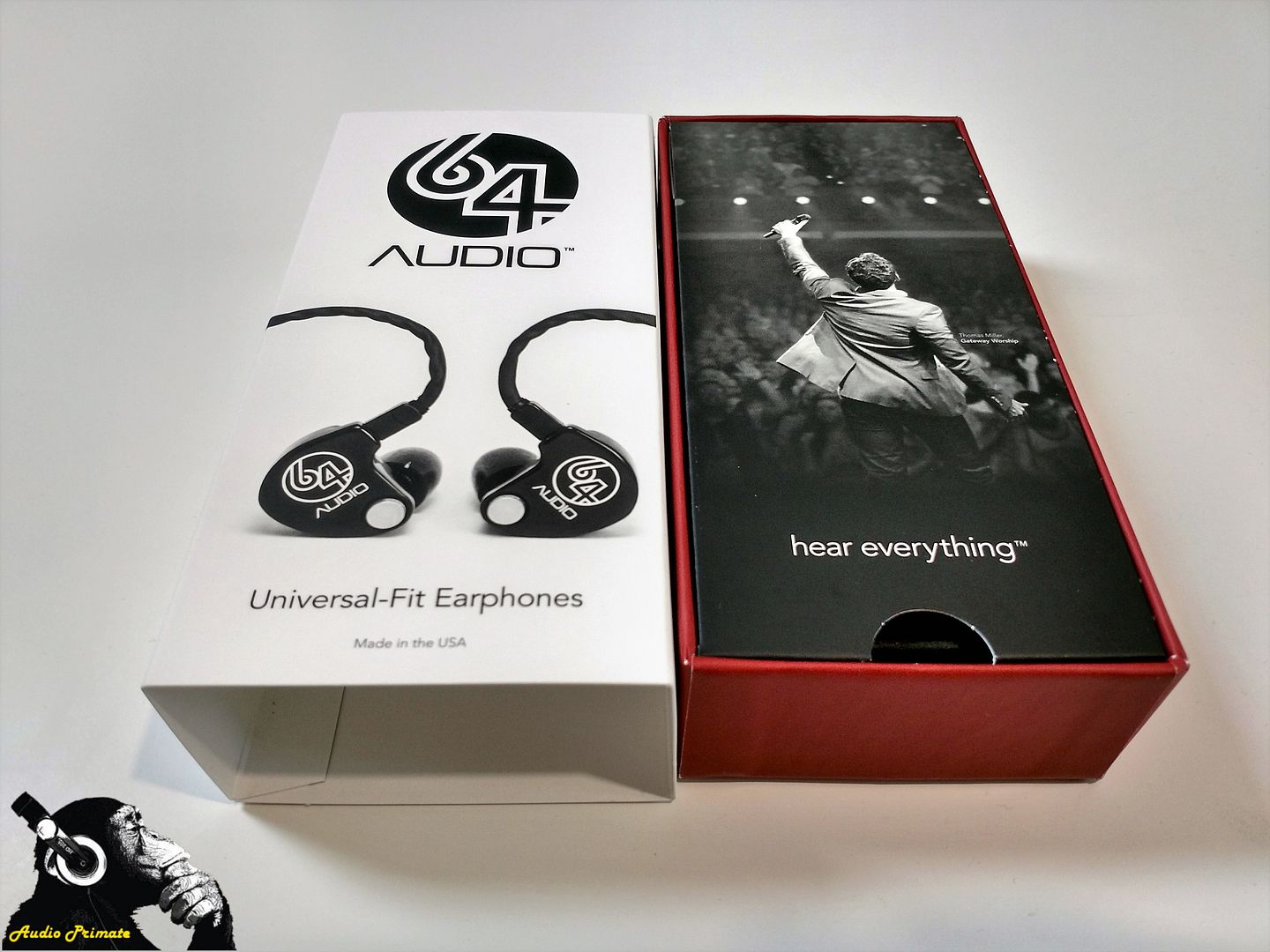
Specifications
(from 64 Audio website):
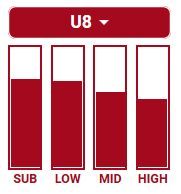
- Impedance: 18Ω @ 1kHz
- Sensitivity: 117dB/mW
- Freq. Response: 10Hz – 20kHz
- Noise Isolation: -20dB with apex m20 module
- Fit: Universal w/foam and silicone tips
- Transducer type: Eight precision balanced armature drivers
- Transducer configuration: 4-low, 2-mid, 2-high
- Quad Bore Design
- Integrated 3-way passive crossover
- Hypoallergenic, hard acrylic shells
As a first foray into the 64 Audio house sound, the U8 has impressed me a lot more than I ever thought it would. It packs a warm, bassy punch, with excellent detailing in the lower frequencies and a clear and musical midrange. Treble is slightly dark but not overly so, with a smooth tilt to the sound that makes for a very musical overall tuning. These get tagged quite unfairly in my opinion as a “basshead only” IEM, but with the right source, this is a thick and smooth sonic joyride, giving plenty of low end grunt in a very enjoyable downward sloping signature with a great soundstage. Unless you are looking for a lean, mean detail machine, the U8 are a pretty underrated monitor in the mid-to-high end price range in my opinion.
When paired with the right source, these IEMs really thrive, presenting a sound that is rich but not cloying, and carrying a surprising amount of technical excellence in terms of soundstage and layering. Combined with the APEX technology to reduce pressure on your eardrums (and attendant ear fatigue) and the engaging and almost speaker-like sound, these are a set of IEMs that should definitely be higher up the pecking order for audiophiles who are looking for a splash of weight and colour to their music, and aren’t’ obsessed with hearing every little scrap of sonic information at the expense of actual enjoyment or bass presence. These are a basshead IEM that everyone should be able to enjoy, and if nothing else, I think the team at 64 Audio should be applauded for that. Sometimes in this hobby it’s easy to forget what we actually use all this high end gear for – to listen our music collection. Not to analyse it, or bask in the glorious detail, just to listen to the tunes and get swept away in that primal reaction to music that makes everyone take up this hobby in the first place. While it isn’t the most technically compelling IEM in its chosen price bracket, the 64 Audio U8 is definitely something I can enjoy my music with, and I would suggest most people will feel the same.







